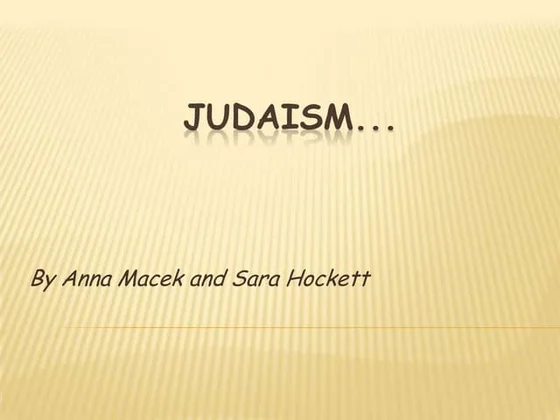The Mishnah, a cornerstone of Jewish oral law, is a complex and rich collection of teachings that form the basis of the Talmud. Composed around 200 CE by Rabbi Judah the Prince, the Mishnah captures the oral traditions previously transmitted orally from generation to generation. This document provides insights into Jewish law and tradition and serves as a historical record of the customs and beliefs of Jewish communities during that period. Understanding the structure and content of the Mishnah is crucial for scholars and students of Jewish studies, and one effective tool for this is the Mishnah chart. Visit https://www.chevrahlomdeimishnah.org/product/i-wish-someone-would-have-told-my-friends/ as we explore the Mishnah chart, its components, and its significance in studying Jewish law.
The Structure of the Mishnah
The Mishnah is organized into six orders, known as Sedarim (singular: Seder), each of which is
further divided into tractates, chapters, and individual teachings or Mishnayot. The six orders are Zeraim (Seeds), Moed (Festival), Nashim (Women), Nezikin (Damages), Kodashim (Holy Things), and Toharot (Purities). Each order covers a broad area of Jewish law. For instance, Zeraim deals primarily with agricultural laws, while Moed focuses on laws related to Jewish holidays. This hierarchical structure ensures that the Mishnah is comprehensive and accessible, allowing for a systematic approach to studying Jewish law.
Components of the Mishnah Chart
A Mishnah chart visually represents the structure of the Mishnah, breaking down its complex organization into a more digestible format. Typically, the chart will list the six orders at the top, with each order branching out into its respective tractates. Each tractate is then divided into chapters, and each chapter contains individual Mishnayot. This visual aid helps students and scholars quickly locate specific teachings and understand the relationships between different parts of the Mishnah. Some charts may include commentary or cross-references to the Talmud, providing further context and interpretation.
The Role of Commentary in the Mishnah Chart
Commentary is crucial in understanding the Mishnah, as the text can often be terse and subject to various interpretations. Traditional commentaries, such as those by Rabbi Shimon ben Gamliel or Rabbi Akiva, provide insights into the teachings’ historical and cultural context. In a Mishnah chart, these commentaries may be included as annotations or footnotes, offering explanations and interpretations that enhance comprehension. This commentary integration helps bridge the gap between the ancient text and contemporary readers, making the teachings of the Mishnah more accessible and relevant.
Significance of the Mishnah Chart in Jewish Studies
The Mishnah chart is an invaluable tool for students and scholars of Jewish studies, as it provides a clear and organized overview of the Mishnah’s structure. By visually mapping out the relationships between the different orders, tractates, and chapters, the chart aids in navigating and studying the text. This is particularly important for beginners, who may find the dense and complex organization of the Mishnah overwhelming. Additionally, the chart can be a reference tool for more advanced scholars, allowing them to locate specific teachings and cross-reference related texts quickly.
Applications of the Mishnah Chart in Education
In educational settings, the Mishnah chart is used to facilitate the teaching and learning of Jewish law. Teachers can use the chart to plan lessons and lectures, ensuring they cover the material systematically and comprehensively. On the other hand, students can use the chart as a study aid, helping them organize their notes and track their progress through the text. Furthermore, the visual nature of the chart makes it an effective tool for visual learners, who may find it easier to understand the Mishnah’s structure through a graphical representation rather than text alone.
Digital Innovations and the Mishnah Chart
With the advent of digital technology, the traditional Mishnah chart has evolved into interactive and dynamic formats. Online platforms and applications now offer digital Mishnah charts that allow users to click on specific sections to access additional information, commentary, and multimedia resources. These digital tools enhance the learning experience by providing instant access to a wealth of supplementary materials, such as audio recordings, video lectures, and scholarly articles. Additionally, digital Mishnah charts can be customized to suit the needs of individual learners, allowing for a more personalized approach to studying the Mishnah.
Challenges in Creating an Effective Mishnah Chart
Creating an effective Mishnah chart has its challenges. One of the main difficulties lies in clearly and concisely representing the complex and nuanced structure of the Mishnah. The chart must balance simplicity and comprehensiveness, ensuring that it is easy to understand while providing enough detail to be helpful. Additionally, including commentary and cross-references add another layer of complexity, as these elements must be integrated in a way that enhances rather than overwhelms the main content. Despite these challenges, a well-designed Mishnah chart can be a precious tool for teaching and studying the Mishnah.
The Mishnah chart is a crucial tool for anyone engaged in the study of Jewish law and tradition. By visually representing the Mishnah’s structure, the chart helps to organize and simplify the complex relationships between its various components. Whether used in educational settings or for personal study, the Mishnah chart enhances comprehension and facilitates a deeper understanding of the text. As digital technologies evolve, the Mishnah chart will undoubtedly continue to adapt, offering new and innovative ways to engage with this foundational document of Jewish law.





























